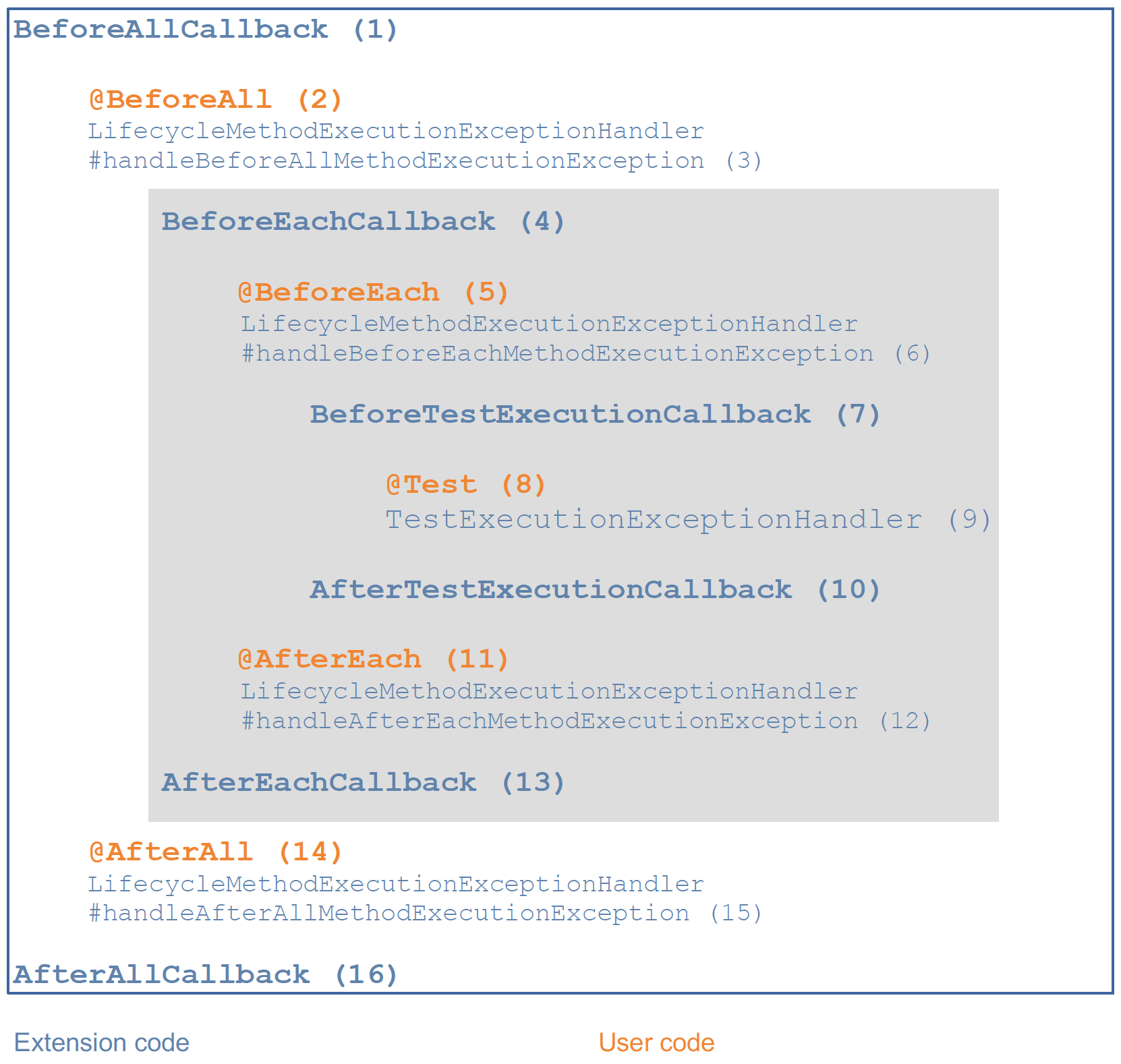|
|
|
|
main()方法测试缺陷
不能把测试代码分离
添加新测试方法,要在main() 添加方法调用
没有打印出测试结果和期望结果,例如,expected: 2, but actual: 1
需要对打印或者输出结果进行人为的判断
……
JUnit
-
给出成功的测试和失败的测试
-
测试报告:成功率/代码覆盖率
…
JUnit 3
|
|
必须继承自TestCase 测试方法必须test开头
对错误的测试,只能通过fail产生一个错误,try里assertTrue(true)来测试
JUnit 4
用 Java5 Annotation 简化测试用例的编写,更灵活与方便
JUnit5
子项目及不同模块组成
JUnit 5 = JUnit Platform + JUnit Jupiter + JUnit Vintage

JUnit3或4的兼容性
JUnit Vintage提供TestEngine在JUnit 5平台上运行基于JUnit 3和JUnit 4的测试的实现
生命周期

@Annotations
| JUnit5 | JUnit4 |
|---|---|
| @Test | @Test |
| @TestFactory | N/A |
| @DisplayName | N/A |
| @BeforeEach | @Before |
| @AfterEach | @After |
| @BeforeAll | @BeforeClass |
| @AfterAll | @AfterClass |
| @Nested | N/A |
| @Tag | N/A |
| @Diable | @Ignore |
| @ExtendWith | N/A |
@Assertions
| JUnit5 | JUnit4 |
|---|---|
| fail | fail |
| assertTrue | assertTrue |
| assertThat | N/A |
| assertSame | assertSame |
| assertNull | assertNull |
| assertNotSame | assertNotSame |
| assertNotEquals | assertNotEquals |
| assertNotNull | assertNotNull |
| assertFalse | assertFalse |
| assertEquals | assertEquals |
| assertArrayEquals | assertArrayEquals |
| assertAll | |
| assertThrows |